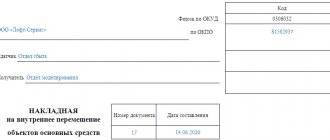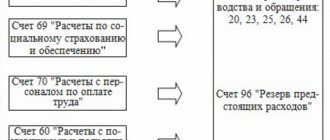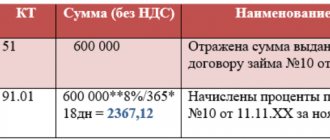Expert consultation
Since 2022, new rules for accounting for fixed assets (FPE) have been applied, namely, new FAS 6/2020 “Fixed Assets” and FAS 26/2020 “Capital Investments” have been introduced. Tax accounting has not been spared the changes: from 2022, the rules for calculating depreciation during reconstruction will be clarified.
The expert “What to do Consult” talks about what modernization and reconstruction are.
Modernization is a change in the technological or service purpose of equipment, updating an object, bringing it into compliance with new requirements and standards, technical conditions, and quality indicators. The initial standard indicators of the functioning of the facility are improved (increased) (clause 2 of article 257 of the Tax Code of the Russian Federation, clause 3.2 of section III of the Official statistical methodology for determining investments in fixed capital at the federal level, clause 16 of the Letter of the State Statistics Committee of Russia dated 04/09/2001 No. MS -1-23/1480).
Reconstruction is a reorganization of a facility associated with the improvement of production (to increase production capacity, improve quality and change the product range). The initial parameters of the object itself or its parts are changed. For example, the area of buildings, the number of floors changes, load-bearing building structures are replaced or restored, etc. (clause 2 of article 257 of the Tax Code of the Russian Federation, clause 14 of article 1 of the Civil Code of the Russian Federation, clause 16 of the Letter of the State Statistics Committee of Russia dated 09.04 .2001 No. MS-1-23/1480).
Modernization and reconstruction are carried out to change the purpose of the OS or improve its characteristics (Letter of the Ministry of Finance of Russia dated March 22, 2017 No. 03-03-06/1/16312).
The new federal accounting standard (FSBU) also reveals these concepts in its own way. Modernization and reconstruction of operating systems are measures to improve them (subparagraph “g”, paragraph 5 of FSBU 26/2020).
How is repair different from reconstruction and modernization?
Since repairs, reconstruction and modernization are reflected differently in accounting and taxation, it is important to classify them correctly. The cost of restoration work does not matter to distinguish between such concepts. What matters here is the purpose for which such work is carried out (see table):
| Type of work | Target |
| Repair | Eliminate the malfunction that prevents the operation of the facility and restore functionality. At the same time, the properties of the object do not change (letter of the Ministry of Finance of Russia dated March 24, 2010 No. 03-03-06/4/29) |
| Modernization | Change the technological and service purpose of the object, improve some of the properties of the fixed asset. For example, in order to be able to work with it under increased loads (paragraph 2, paragraph 2, article 257 of the Tax Code of the Russian Federation) |
| Reconstruction | Rearrange the facility so that its capacity increases, the quality of products improves or its range becomes wider (paragraph 3, paragraph 2, article 257 of the Tax Code of the Russian Federation) |
To determine whether a property restoration is a renovation, renovation, or upgrade, refer to the following documents:
- Regulations on carrying out planned preventative repairs of industrial buildings and structures MDS 13-14.2000, approved by Decree of the USSR State Construction Committee dated December 29, 1973 No. 279;
- Departmental Construction Standards (VSN) No. 58-88 (R), approved by order of the State Committee for Architecture under the USSR State Construction Committee dated November 23, 1988 No. 312;
- by letter of the USSR Ministry of Finance dated May 29, 1984 No. 80.
This is stated in the letters of the Ministry of Finance of Russia dated March 24, 2010 No. 03-11-06/2/41, dated February 25, 2009 No. 03-03-06/1/87 and dated November 23, 2006 No. 03 -03-04/1/794.
Situation: can the work be considered a repair if, as a result, the characteristics of the fixed asset have improved? Before restoration, the main asset was faulty.
The answer to this question depends on the nature of the improvements.
In general, repairs are necessary precisely to restore the working condition of the property, and not to change its properties. If the characteristics of the fixed asset have improved, then the work may be considered reconstruction or modernization. That is why it is necessary to clearly define what the improvements are related to.
Work is recognized as repair work only if, as a result, properties change that are not related to the workload and technical and economic indicators of the object. In addition, it is important that such restoration does not affect the quality and range of products (works, services). Otherwise, the cost of restoration work will not meet the criteria for repair costs.
This conclusion follows from paragraph 2 of Article 257 of the Tax Code of the Russian Federation. A similar point of view is reflected in letters of the Ministry of Finance of Russia dated April 22, 2010 No. 03-03-06/1/289, dated December 29, 2009 No. 03-03-06/1/830, dated October 9, 2006 No. 03-03-04/4/156 and dated May 27, 2005 No. 03-03-01-04/4/67.
The courts share this position. Thus, if the work led to changes in the technical and economic indicators of the object and its purpose, then they cannot be considered repairs (see, for example, the determination of the Supreme Arbitration Court of the Russian Federation dated March 3, 2011 No. VAS-173/11).
By the way, there is an interesting position of the courts on replacing faulty parts of an object with more advanced or powerful ones. According to the arbitrators, this is not modernization. The main thing is that as a result of such a replacement, the technological or production purpose of the facility does not change. Even if performance characteristics improve, the costs of replacing faulty components and assemblies are recognized as repair costs. This position, for example, is expressed in resolutions of the Federal Antimonopoly Service of the Central District of February 9, 2010 No. A14-14803/2008/500/24, of the North-Western District of August 21, 2007 No. A56-20587/2006, of the Moscow District of August 14 2006 No. KA-A40/7489-06, Ural District dated June 7, 2006 No. F09-4680/06-S7).
Do-it-yourself OS repair
LLC "Fortuna" carries out repairs of the OS facility in an economic way. The organization does not create a reserve for repairs, so all costs are accepted as expenses of the current period. The cost of the own materials spent is 3,600 rubles. Costs for remuneration of workers performing repairs - 10,000 rubles.
Postings for repairing the OS in an economic way will be as follows:
| Dt | CT | Operation description | Amount, rub. | Document |
| 23 | 10 | Cost of materials written off | 3 600 | Request-invoice |
| 23 | 70 | Salary accrued | 10 000 | Accounting information |
| 23 | 69.1 | Contributions to the Social Insurance Fund from accrued salaries (10,000 * 2.9%)* | 290 | Accounting information |
With the economic method, all amounts from cost accounts are ultimately collected on account 23 “Auxiliary production”, which is closed on account 20 “Main production”.
Let's assume that an organization creates a reserve for OS repairs. Then the costs will be written off against the reserve.
Transactions for writing off the costs of repairing the OS using an economic method at the expense of the reserve will be as follows:
| Dt | CT | Operation description | Amount, rub. | Document |
| 96 | 10 | The cost of materials is written off against the reserve | 3 600 | Request-invoice |
| 96 | 70 | Salary accrued | 10 000 | Accounting information |
| 96 | 69.1 | Contributions to the Social Insurance Fund from accrued salaries (10,000 * 2.9%) | 290 | Accounting information |
* The calculation of the Social Insurance Fund is given as an example of the calculation of insurance premiums.
Types of repairs
Repairs are classified as follows. Depending on who is doing the work: it can be repaired on its own (self-employed) or with the involvement of a contractor. And depending on the frequency and complexity, repairs can be current or major.
The first division is clear. And let's look at the second one in more detail. Typically, routine maintenance is the maintenance of fixed assets to keep facilities in working order. Major repairs involve replacing basic elements, parts, structures, etc.
You can determine which specific repairs are considered current and which major ones. In this case, you need to focus on documents developed by internal technical services (letter of the Ministry of Finance of Russia dated January 14, 2004 No. 16-00-14/10).
Study the prices for repairs or contact a contractor to draw up an estimate
The expert dwelled in detail on the question of who prepares cost estimates for routine repairs of common property in the apartment building. It could be:
- contractor,
- accounting and economists of the educational institution,
- board of a homeowners association or cooperative.
It makes sense to contact a qualified estimating service if the company does not have specialist estimators or if the estimate prepared by the contractors does not suit you.
If you decide to make an estimate for current repairs yourself, first study the territorial unit prices in construction for various types of work (TER). Find out where to find them in the video.
How an HOA can correctly prepare an estimate of income and expenses: expert advice
779620
What documents need to be used to justify the need for repairs?
The need for repairs can be confirmed by a report on identified faults and defects of the fixed asset, or a defect sheet. For some industries, standardized forms of such documents are provided. For example, defects in the handling and transport equipment of sea trade ports can be documented using a defect sheet, which was approved by Decree of the Ministry of Transport of Russia dated January 9, 2004 No. 2. Defects in the main elements of pipelines of thermal power plants are reflected in the sheet of pipeline defects (approved by Decree of the State Mining and Technical Supervision of Russia dated June 18, 2003 No. 94).
If there is no unified form of a document confirming the detected defects, then you can develop a form yourself. For example, an act on identified faults (defects) of a fixed asset item. The main thing is that this form contains all the required details. The report indicates the faults of the fixed asset and proposals for their elimination.
How many copies of the report on identified faults, defects of fixed assets or statements should be prepared? It all depends on who owns the property and who will do the repairs:
- if you repair your own property using your own means, that is, on your own, then one copy “for yourself” will be enough;
- when the work will be performed by contractors, draw up a document according to the number of participants. Representatives of all parties involved must sign each copy.
If you are repairing new equipment, the defects of which were identified during installation, then you need to record them in a report on the detected equipment defects. For example, according to form No. OS-16. This should be done in relation to objects that have not yet been registered as fixed assets.
How to register the transfer of a fixed asset for repairs
Document the transfer of the object for repair. This will not have to be done only when the main asset is being repaired on site. This procedure follows from the instructions approved by Resolution of the State Statistics Committee of Russia dated January 21, 2003 No. 7.
When you transfer a fixed asset for repair to a special division of the organization, draw up an invoice for internal movement, for example, according to form No. OS-2.
If the repairs are carried out by a third-party organization with which a contract has been concluded, then the transfer of the object for repair is formalized, for example, with an act of acceptance and transfer of the object for repair. It can be compiled in any form. If the contractor suddenly loses or damages a fixed asset, the signed act will allow him to demand compensation for losses. If there is no act, then it will be difficult to prove the transfer of fixed assets to the contractor, as well as to demand compensation. This follows from articles 15, 702 and 714 of the Civil Code of the Russian Federation.
Reconstruction
The definition of reconstruction is given in paragraph 14 of Art. 1 of the Town Planning Code of the Russian Federation, it includes:
- changing the parameters of the object (height, number of floors, area, volume), including superstructure, reconstruction, expansion of the object,
- replacement, restoration of load-bearing building structures of a capital construction project, with the exception of replacement of individual elements of these structures.
That is, reconstruction does not consist in maintaining the condition of the object, but in its reconstruction. Moreover, during reconstruction, the initial cost of an object may increase if its functional indicators have changed (clause 27 of PBU 6/01).
Read more about changing the initial cost of the OS in the following articles:
- Upgrading the OS with increasing SPI
- Upgrading the OS without increasing the SPI
What documents should I use to formalize the acceptance of a restored fixed asset?
Acceptance of the repaired object is formalized by a special act. For example, according to form No. OS-3. It is filled out regardless of whether the repairs were carried out internally or by contract. Only in the first case do they fill out the form in one copy, and in the second - in two (for themselves and for contractors).
The act is signed by:
- members of the selection committee created by the owner of the property;
- an employee responsible for the repair of fixed assets or a representative of the contractor;
- employee responsible for the safety of fixed assets after repairs.
After this, the act is approved by the head. Next, the document is handed over to the accountant.
After receiving the report, reflect the information about the repairs carried out in the inventory card for recording the fixed asset or in the inventory book (intended for small businesses). To do this, you can use standard forms No. OS-6, No. OS-6a or No. OS-6b. This is stated in the instructions approved by Resolution of the State Statistics Committee of Russia dated January 21, 2003 No. 7.
When accepting buildings, structures or premises after construction and installation work, additional paperwork must be completed. Namely, the acceptance certificate in form No. KS-2 and a certificate of the cost of work performed and expenses in form No. KS-3. These forms were approved by Decree of the State Statistics Committee of Russia dated November 11, 1999 No. 100.
By the way, if parts were changed during the repair process, then you will need to draw up an act for replacing spare parts of the fixed asset. There is no standard form for such a document, so it can be drawn up in any form (Part 1, Article 9 of Law No. 402-FZ of December 6, 2011).
Advice : to simplify document flow, acts on the replacement of spare parts in fixed assets can be drawn up at the end of the month for each performer of work.
Situation: is it necessary to draw up an act of acceptance and delivery of a fixed asset during self-repair, for example, according to form No. OS-3?
Answer: no, it is not necessary if the main asset was not transferred to other departments during repairs.
This is explained by the fact that it is necessary to draw up acceptance certificates only when moving fixed assets from the customer to the contractor and vice versa. For example, if the object was transferred for repair to a contractor or to the organization’s repair service.
If, during repairs, the location of the object does not change, when the repairs are carried out directly “on the spot,” then acceptance and transfer of the fixed asset does not occur.
Situation: is it necessary to indicate in the act in form No. OS-3 the cost of materials used by the contractor to repair the fixed asset? The organization handed over spare parts to the contractor for repairs.
Answer: no, it is not necessary.
Form No. OS-3 is used for the acceptance and delivery of fixed assets from repairs (instructions approved by Resolution of the State Statistics Committee of Russia dated January 21, 2003 No. 7). Section 2 indicates the contractual cost of repairs. And the contractor must indicate the composition and cost of spare parts for the repair of fixed assets in the report on the materials consumed (Article 713 of the Civil Code of the Russian Federation).
Reflection of maintenance costs with frequency > 12 months. as a separate OS object in the BU
Create a document OS Modernization in the OS and Intangible Materials .
On the Construction object , indicate the capital investment object, which includes maintenance costs with a frequency of > 12 months.
On the Fixed Assets , select the OS for which the maintenance was carried out, and using the Distribute , the tabular part will be filled in automatically.
- BU: Amount - the amount of capital investments (in our example - 120,000 rubles);
- Expiration date — the initial period of use of the OS in the BU (it does not change);
- Amount - not filled in, because in NU the costs are already included in expenses;
Postings according to the document
The document generates the posting:
- Dt 01.01 Kt 08.03 - accounting for maintenance costs with frequency > 12 months. as a separate component in the cost of OS in used.










